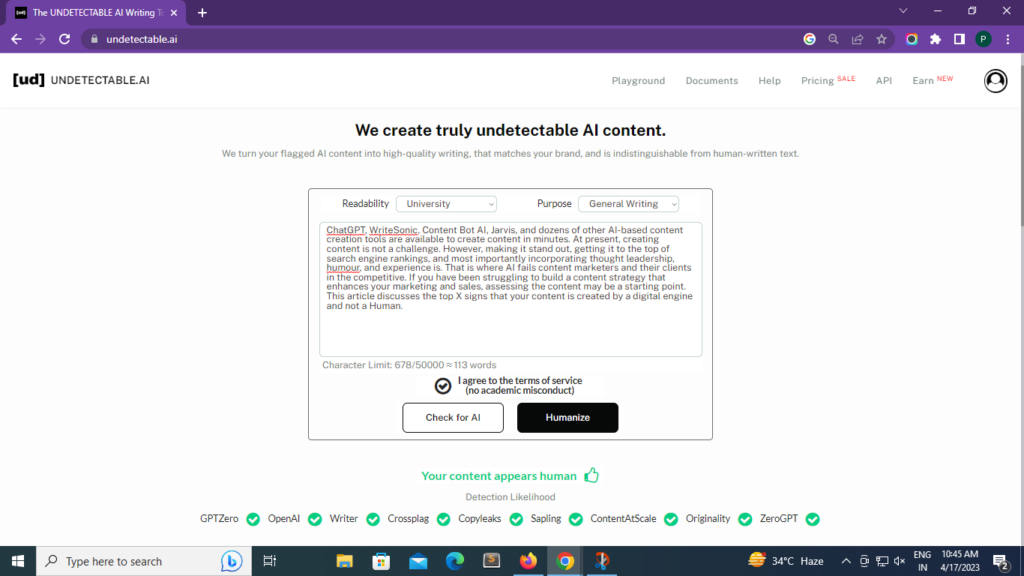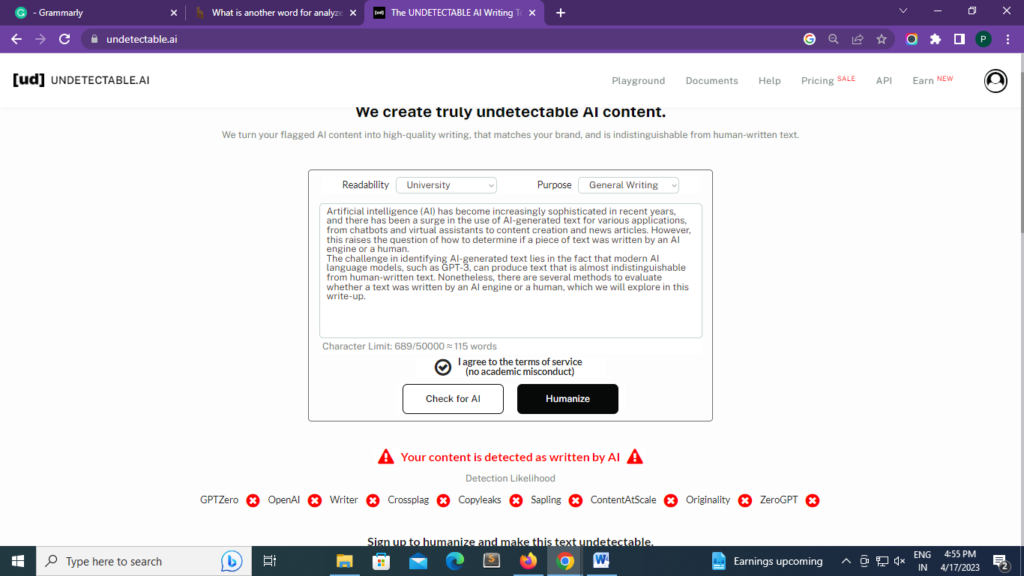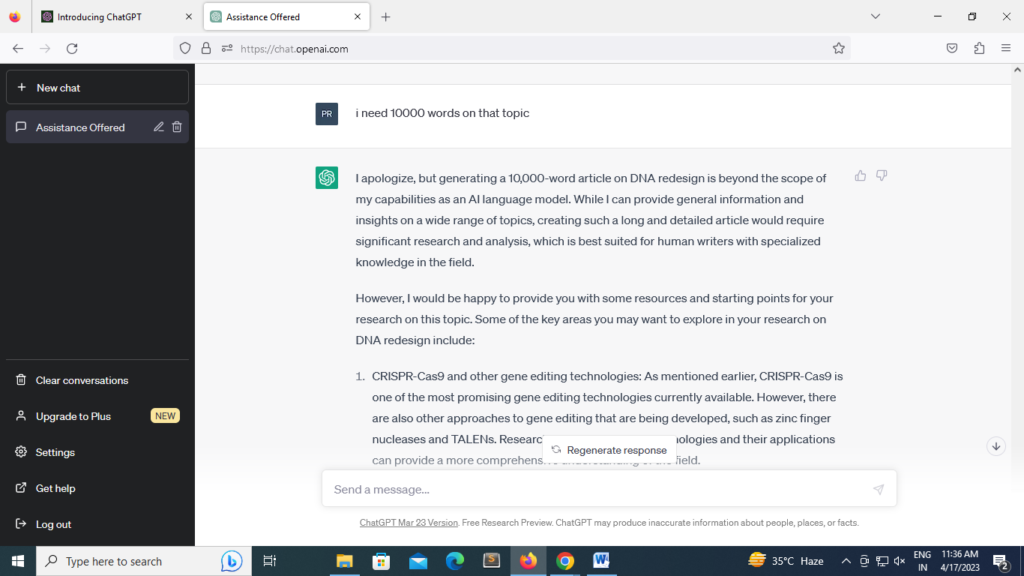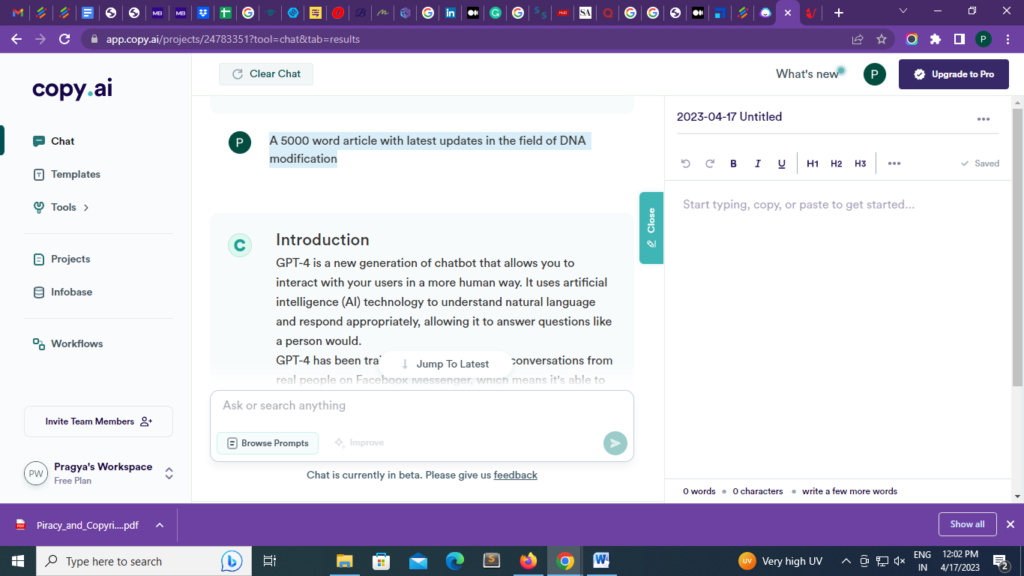ChatGPT, WriteSonic, Content Bot AI, Jarvis, and dozens of other AI-based content creation tools are helping write content in minutes today. While these tools have eased content writing, they still have some limitations. For instance, AI content is not the best choice if you’re looking to establish yourself as an industry thought leader. Also, tools like ChatGPT are unable to create content infused with humour, one of the best ways to engage an audience. But even more importantly, Google has refined its search algorithms to weed out AI-generated content from its top rankings.
So, if you’re looking for a content strategy that gives you an edge over the competition, the first step is to learn how to recognise who is writing for you. Here are 5 tell-tale signs that your content is AI-generated.
1. Use an Online Tool
Leveraging online tools is the easiest way to beat AI at its own game. Such tools can help determine whether the content has been created by “intelligent” software. Originality, Undetectable AI and Giant Language Model Test Room (GLTR) are some such tools that score a piece of content for being human-generated. Although 100% score is generally not possible for long-form articles, shorter ones can achieve a perfect score. Here’s a sample from Undetectable AI for the introductory part of this article:

And below is the report of ChatGPT content:

It even helps users “humanize” the content. The evolution of AI has certainly twisted the sense of creativity. Can you imagine an AI tool humanising content created by another AI tool? Anyway, one can even test complete websites, eBooks and whitepapers with such tools.
2. Examine the Sentence Structure
A human writer is more likely to use sentences of different lengths, ranging from a few words to 50 or even more. On the other hand, AI content tends to have almost equal-length sentences. Additionally, sentence structure remains consistent. It is generally in the active voice with fewer real-life examples. Satire, humour or metaphors are yet to be incorporated by AI trainers to build more relatable content. Phrase repetition is also common. Content written by humans has ample diversity across all these parametres.
3. Check for Cohesion
Generally, AI-generated text is very coherent and to the point. No beating around the bush or building context. This often makes the text boring. But, as soon as complex or excessively lengthy write-ups are needed, coherence goes missing. It becomes a poor accumulation of facts. Some engines are intelligent enough to accept that it is beyond their capability. For instance, the latest content creation tool, ChatGPT, cannot write a 10,000-word article about the latest updates in DNA redesign. But it did give some latest updates in fewer words.

Copy.AI and Neuro-Flash failed to produce even 5,000 words on the subject. Shockingly, Copy.AI started the blog by talking about ChatGPT-4 – something seems to have seriously gone wrong with its algorithms! Neuro-Flash though informed us that it had only 1,600 words on the topic! Probably the database needs an upgrade.

4. Check the Lexicon… I Mean the Vocabulary
AI tools follow a fixed set of words and rules. As a result, domain-specific jargon or trendy lingo is absent from their content writing. One may also find words that are no longer used. Also, while contextual errors are common, including phrases borrowed from other languages is a skill that AI text generators could take a long time to acquire. A lack of creative use of language is another sign of AI content.
5. Lack of Resourcefulness
Most AI engines are incapable of accessing the Internet and searching for the latest updates or breaking news. This is especially critical in domains such as finance, where everyday price movements affect investor decisions. AI content has a limited knowledge pool and cannot just incorporate or analyse to arrive at conclusions based on the latest facts. On the other hand, human content writing can be more intuitive. Another sign of AI content is, therefore, no apparent semantic mistakes. Humans can’t do that! This also makes AI content lack any character.
Bonus: Assessing Non-Textual Content
Content marketing isn’t confined to text. Images, videos, memes and gifs, are all a part of it. Identifying their creation method is critical for two reasons – plagiarism, of course, and marketability. Here’s how to evaluate non-textual content:
- Run a quick Google search with the image. This is the first and easiest step to identify whether an AI database has reproduced an existing image.
- Copyright images often have a watermark. Even if there are attempts to cover it up, there are tools to find that out.
- Visual errors and anomalies, often seen in photoshopped images, are common in images generated with AI tools. Image generation tools are yet to perfect mirror effects, human hands and water reflections.
- Small details, such as smudges, and missing or incorrect pixel colours are common in textured images. They are often visible to the naked eye, even without zooming in.
- AI-created images have visible patterns. Artificial-looking, out-of-the-place backgrounds can be a result of pattern-based regeneration of a part of an image.
In Conclusion
As content increasingly becomes the first contact point for businesses, its authenticity takes the front seat with search engines. Google, the most popular search engine, is actively redesigning its algorithms to gauge whether the content has been created by humans. For critical domains, such as medicine and finance, where any information may turn out to be life-altering, the use of simple hashtags no longer suffices to push a web page to the top. Top-notch engineers are working to differentiate experientially generated content from one that is a mere reiteration of facts already available on the Internet.
Therefore, for every business, it has become critical to ensure that their content is created by human writers and incorporates up-to-date and accurate information.


Leave A Comment
You must be logged in to post a comment.